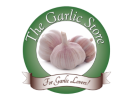GARLIC FAQs
|
It is traditional to assemble a list of frequently asked questions (FAQs) for the benefit of the Internet denizens. We already have several sections that address many key questions about garlic (Test Your GQ) (Your Garlic IQ), How to Grow Garlic ). We know there are many other questions which are waiting to be asked. But it will be the visitors to this site who will help us develop the Garlic FAQ. Contributions made via e-mail to TheChiefClove@TheGarlicStore.com will form the basis of the Garlic FAQs. It should take us several months to assemble the first version. Don't be shy. Contribute. Questions and/or answers are greatly appreciated, so check this space frequently. |
|
Q: What happens when garlic turns green or blue during pickling or cooking? On the same subject, our friend, Bob Anderson, explains that garlic contains sulfur compounds which can react with copper to form copper sulfate, a blue or blue-green compound. The amount of copper needed for this reaction is very small and is frequently found in normal water supplies. Raw garlic contains an enzyme that if not inactivated by heating reacts with sulfur (in the garlic) and copper (from water or utensils) to form blue copper sulfate. The garlic is still safe to eat. |
| Q: Can you plant garlic in the spring? A: Yes. While fall planting is preferred in northern portions of the country (garlic is a bulb, like a tulip), you can get good results with spring planting. This is especially true in the more southerly parts of the U.S. where February and March planting is common. Plant the cloves as soon as the soil can be worked and the threat of very hard freezes has ended. As always, use some mulch and water frequently. |
| Q: What is Spring Baby Garlic or Green Garlic? A: Few realize that the young garlic plant is not only edible, but it produces a truly special springtime treat for chefs. The individual cloves from smaller bulbs can be planted in either fall or early spring. When plants reach 12-16 inches in height, harvest them like green onions or scallions. They can be used raw, braised, in stir fries, and are a fabulous garnish raw or braised. Rarely available in stores, you can easily grow your own in a small corner of your garden. See Spring Baby Garlic . |
| Q: What is the Garlic Seed Foundation? A: This is a must join organization for the serious garlic gardener. A non-profit group operated by and for garlic growers, it publishes a very useful quarterly newsletter (The Garlic Press, what else?) which is available for a very modest $10 per year subscription. Send your check to The Garlic Seed Foundation, Rose Valley Farm, Rose, NY 14542. The person in charge is David Stern, himself a grower and tireless promoter of the superb herb. |
| Q: What is "society" garlic? (question contributed by Lee Schein) A: It isn't a garlic, though the leaves somewhat resemble the sativum family. This decorative perennial plant is technically called "tulbaghia violacea" and is often used as a ground cover. It can gorw to a height of 2 feet and has some small flowers. It does not produce any edible parts. The origin of the common name is unknown. |
| Q: How can you remove garlic odor from your breath? A: Perhaps the best way of handling the "breath scare" is to be sure everyone is eating garlic and then no one will care. But short of that, try chewing on a sprig or two of fresh parsley. It takes a lot of edge off garlic breath, and it is good for you, too. Great source of iron. |
| Q: Does cooking destroy garlic's medicinal value? A: Not according to nutitionist Dr. John Milner of The Pennsylvania State University. BUT it can! The way to avoid this is apparently to let the peeled garlic sit for about 10 minutes before cooking. The exposure to oxygen apparently triggers a chemical reaction that produces anticarcinogens that heat cannot destroy. |
|
Q. What is our favorite food flavor? |
